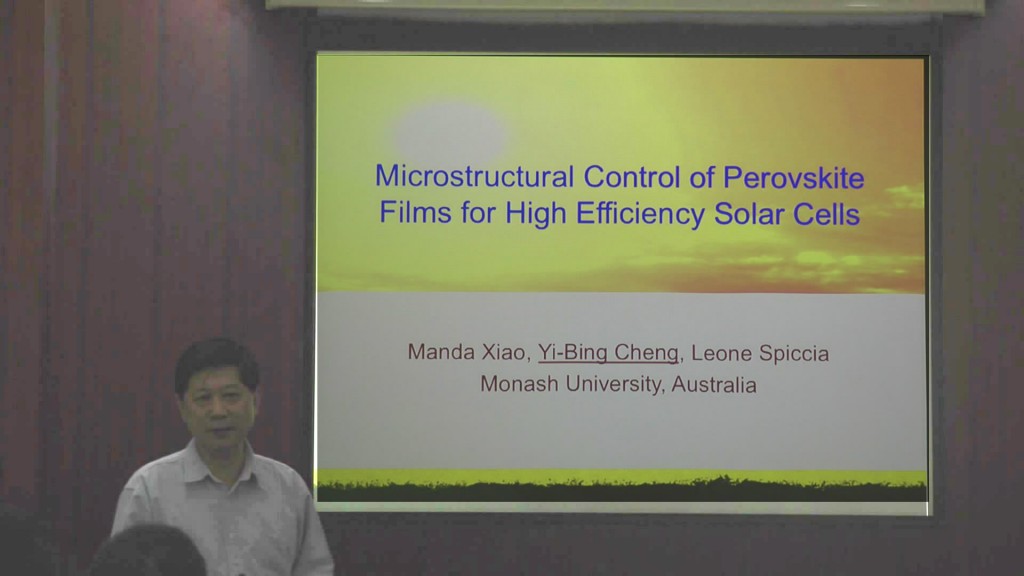光电化学系列讲座(四十七)
7月9日上午10点,程一兵院士应清洁能源实验室主任孟庆波研究员邀请,在中科院物理所M楼238做了关于 Microstructures Control of Perovskite Thin Films for High Efficiency Solar Cells
报告人简介: Yi-Bing Cheng (程一兵)is a professor in Department of Materials Engineering at Monash University and an elected Fellow of the Australian Academy of Technological Sciences and Engineering. He completed his undergraduate (1978) and Master (1983) studies at Wuhan University of Technology, China and received a PhD degree from University of Newcastle-upon-Tyne, U.K. in 1989. He joined Monash University in 1991 after three years of postdoctoral research in the U.K. and worked through as a Lecturer, Senior Lecturer, Reader and Professor at Monash University. He specialises in inorganic materials and composites. He has worked in a number of research areas covering glass, glass-ceramics, structural ceramics, ultra high temperature ceramics and ceramic-polymer composites. He started working on dye sensitised solar cells in 2001 and has been focused on the processing of the solar cell devices by printing techniques, which has received significant grants from the Australian government and industry. He has recently worked on perovskite solar cells. His work has received a number of awards in Australia and overseas. He has published over 360 research papers and is an inventor of 17 patents. He is currently a Thousand Talent Professor at Huazhong University of Science and Technology, Wuhan National Laboratory for Optoelectronics.
报告摘要:Methylammonium lead iodide perovskite has exhibited some very interesting optoelectronic properties and solar cells made of this material have achieved extraordinary efficiency improvement in just a few years. In perovskite solar cells (PSCs), the perovskite film, usually a few hundred nanometer thick, serves the dual roles for both light absorption and charge transport, and thus is a critical functional component for the devices. The microstructure of the perovskite film has significant effects on the solar cell’s performance. Normal one-solution spinning coating produced a film consisting of non-uniform large rod shape perovskite grains and uneven coverage of the underneath substrate with a lot of pin-holes, resulting in a poor power conversion efficiency. The major reason for such a poor microstructure was due to slow supersaturation of the perovskite solution during the normal spin-coating process. A sequential deposition and a dual-source thermal evaporation technique were developed to overcome the mentioned problem. Our team has developed a novel processing technique that can produce flat and very uniform microstructures of perovskite thin films by spin-coating. Planar heterojunction solar cells constructed with these solution-processed perovskite thin films yielded a maximum power conversion efficiency of 16.2% under standard AM 1.5 conditions. This presentation will introduce this new processing technique and report our understandings for microstructural control of the perovskite films for achieving high power conversion efficiency

